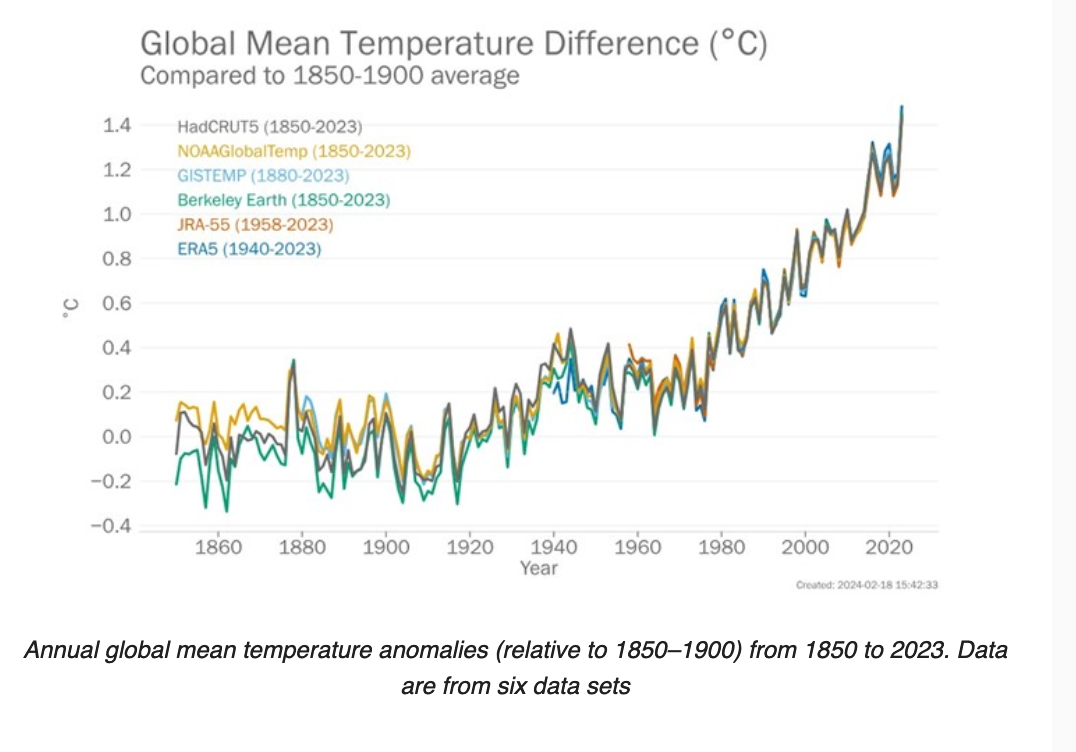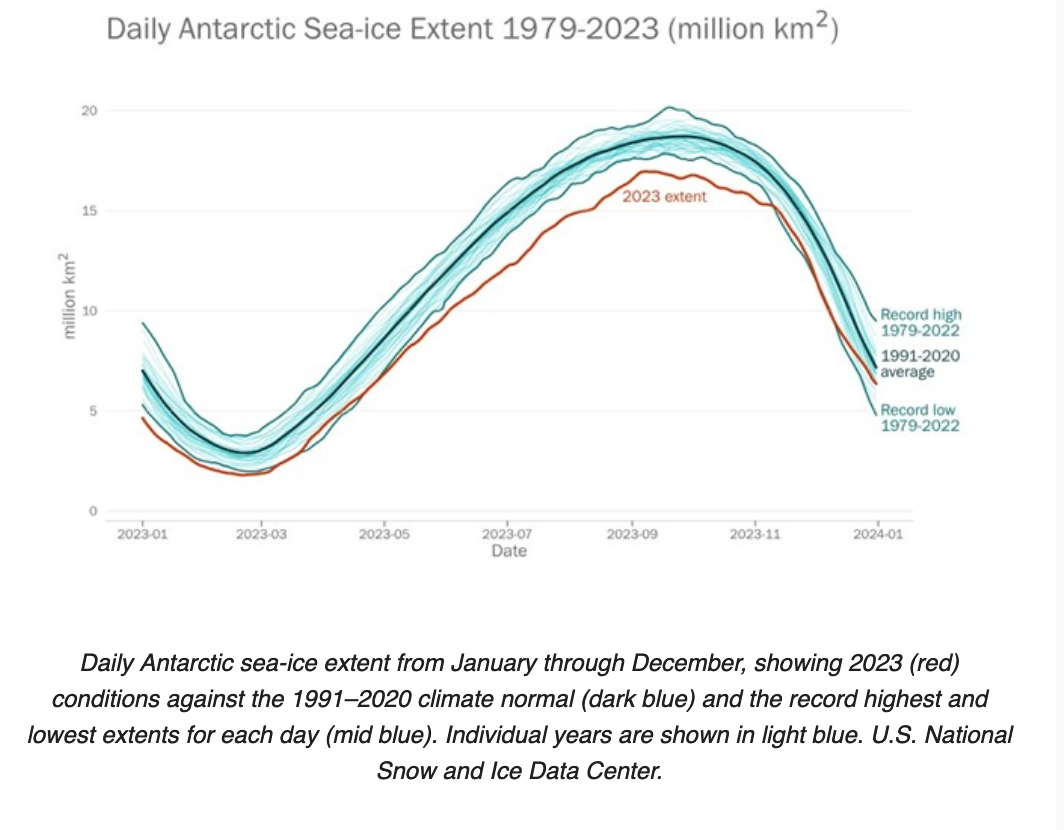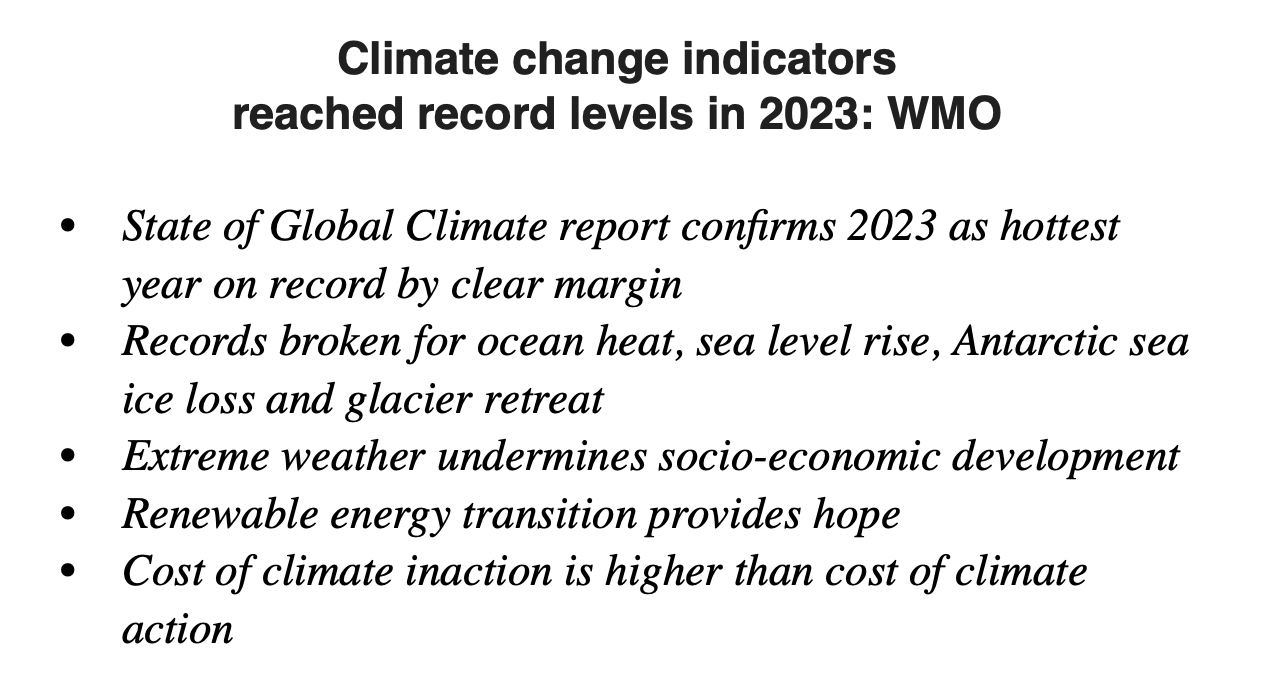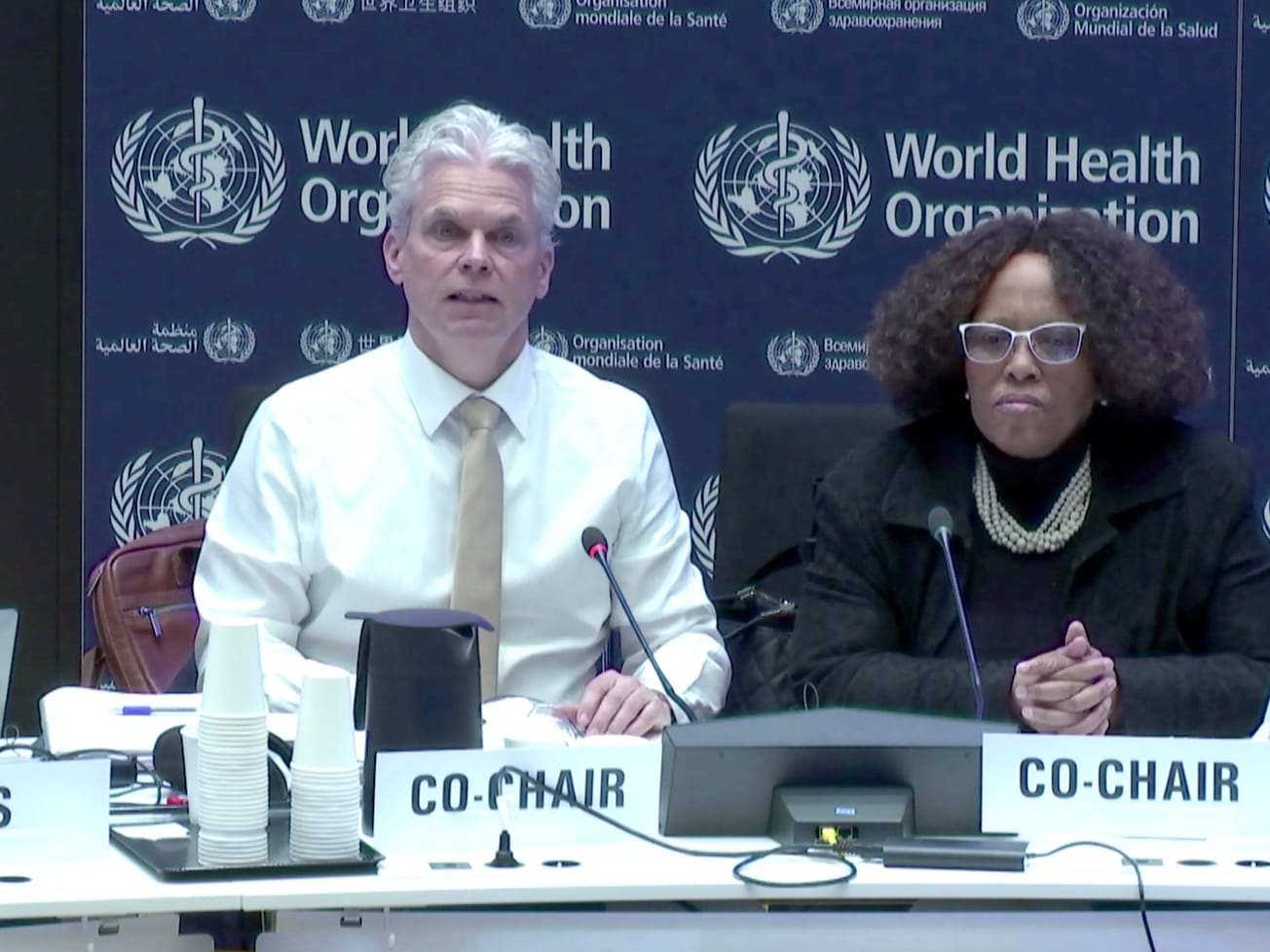Welcome to the future. The off-the-charts era of weather extremes that climate scientists have been warning us about for the last few decades has arrived.
The air is hotter, the oceans are warmer, the polar ice is melting, glaciers are shrinking and the seas are rising – all confirmed in the U.N. weather agency’s comprehensive new report made public on Tuesday.
Heatwaves and floods, droughts and wildfires, rapidly intensifying tropical hurricanes and cyclones are leaving in their wake "misery and mayhem," WMO says, as these weather events, supercharged by human-caused global warming, upend everyday life for millions of people around the globe while inflicting billions of dollars in economic losses.
Land is becoming uninhabitable, food insecurity is on the rise, and millions of people are on the move.

A climate 'red alert'
The Geneva-based World Meteorological Organization’s “State of the Global Climate 2023” report shows records were again broken and, in some cases, smashed for greenhouse gas levels, surface temperatures, ocean heat and acidification, sea level rise, Antarctic sea ice cover and glacier retreat.
“The WMO community is sounding the red alert to the world,” says the agency's secretary-general, Celeste Saulo, an Argentine meteorologist. “Climate change is about much more than temperatures. What we witnessed in 2023, especially with the unprecedented ocean warmth, glacier retreat and Antarctic sea ice loss, is cause for particular concern.”
While it may be temporary, the Earth has never before teetered so close to the edge of the 1.5° Celsius lower limit of the Paris Agreement on climate change, she says.
Established in 2015 and signed by nearly 200 countries, the Paris Agreement is a landmark international treaty aimed at combating climate change. The treaty’s primary goal is to limit global warming to well below 2° C. above pre-industrial levels, with an aspiration to limit the temperature increase to 1.5°.
WMO reports the global mean near-surface temperature in 2023 was 1.45° ± 0.12 ° above the pre-industrial 1850–1900 average, and last year was the warmest year in the 174-year observational record.
This shattered the record of the previous warmest years, in 2016, when it registered at 1.29° ± 0.12 ° above the 1850–1900 average, and in 2020, when it was at 1.27°± 0.13°.

Humanity's 'defining challenge'
On any given day last year, about a third of the global ocean was experiencing a marine heatwave, which damaged ecosystems, killed fish and bleached coral reefs. By the end of 2023, more than 90% of the global ocean had experienced heatwave conditions at some point during the previous 12 months.
“The climate crisis is the defining challenge that humanity faces and is closely intertwined with the inequality crisis – as witnessed by growing food insecurity and population displacement, and biodiversity loss” Saulo says.
The extent of Antarctic ice was by far the lowest ever seen and the collection of glaciers studied by climate scientists “suffered the largest loss of ice on record (since 1950), driven by extreme melt in both western North America and Europe,” preliminary WMO data shows.

A glimmer of hope
While there is some cause of optimism, it remains but a glimmer: the capacity of renewable energy from solar and other sources increased last year by nearly 50% from 2022, reaching 510 gigawatts, the highest growth rate in the past 20 years.
Still, concentrations of the trio of main greenhouse gases – carbon dioxide, methane and nitrous oxide – reached record levels in 2022 and continued to increase last year. The level of heat-trapping CO2 in the atmosphere is about 50% higher than the pre-industrial level, and given the long lifetime of the gas, “temperatures will continue to rise for many years to come,” WMO says.
Food insecurity on the rise
As the Earth has grown ever hotter, the number of people facing acute food insecurity has more than doubled from 149 million, before the COVID-19 pandemic, up to 333 million people last year, the World Food Program says.
With the world experiencing economic downturns, rising food prices and disrupting wars and conflicts from Gaza to Haiti to Sudan and Ukraine, WFP says the changing climate may not be the root cause, but it remains an important factor.
In the wake of Cyclone Freddy in Feb. 2023, for example, southern Africa had extensive flooding that severely damaged farm lands, crops and the economy.
Climate leaders and ministers are due to meet Thursday and Friday at Copenhagen for the first time since last year's COP28 was held in Dubai to push for climate action. It also coincides with World Meteorological Day on Saturday, which commemorates the WMO and highlights its work.









